KEY TAKEAWAYS:
Ableton Live has a high price tag but is well worth it, offering an impressive array of possibilities for music production. Meanwhile, if you’re looking for a less restricting workflow and are budget-conscious, REAPER might be a better choice.
REAPER Vs. Ableton
It’s no secret that many DAW software (Digital Audio Workstation) programs are available today. If you need an easy way to record, edit and mix your tracks,
But quickly find out that you have quite the selection to choose from! Two choices that immediately come to mind are Ableton Live and Cockos REAPER.
Cockos REAPER and Ableton Live have many features to help you quickly start your musical journey.
But what are the main differences between them? Which one should you pick?
Let’s find out!
REAPER User Interface
Whether you’re a seasoned producer or just starting, the user interface of your software is one of the most critical factors in working quickly and efficiently.
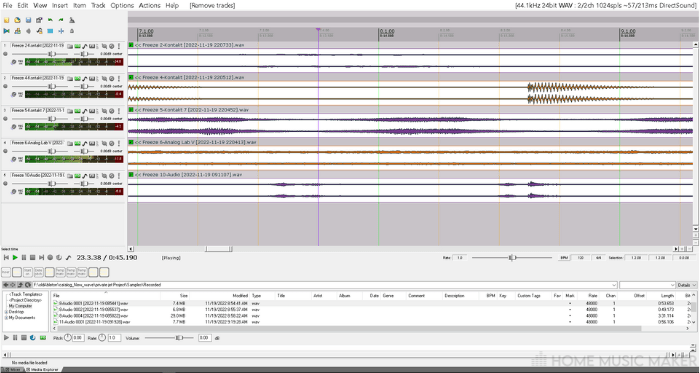
REAPER has a more traditional look than Ableton. At the same time, on-screen controls are minimalistic. They have an elegant quality that doesn’t clutter up the screen. This may be seen as dated by some people.
Still, it also makes Reaper more lightweight and responsive, especially on lower-end computers.
Ableton Live has a more modern look and feel. The interface is comprehensive, causing it to feel crowded or confusing at times.
Many people consider Ableton to have a steep learning curve. However, once you get used to it, there is virtually no limit to what you can do.
In other words, Ableton is more like an instrument, and REAPER is more like an audio production tool.
WINNER: Ableton Live
Stock Plugins, Sounds, And Instruments
Both REAPER and Ableton offer stock plugins. However, there are some differences in the features offered.
For example, REAPER offers only effects and no samples, instruments, or synths (save for Reasynth, a basic synthesizer).
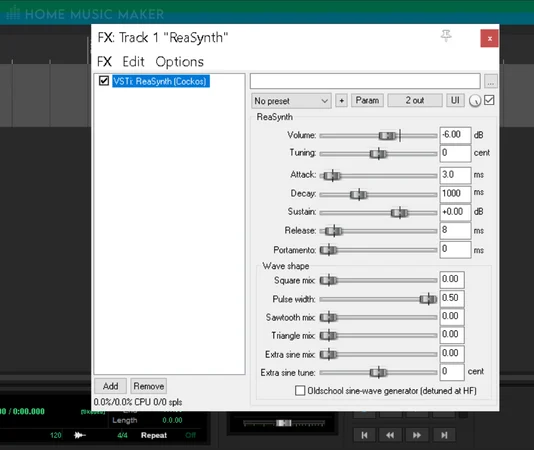
It is worth mentioning that REAPER’s effects are known for being easy on system resources and include the most common effect types like compression, EQ, and reverb.
It’s also worth mentioning that while REAPER may not come with many instruments, you can still find a lot of free JSFX instruments with a few google searches.
Most of what you will find has been written by the community and can also be used as a learning resource to help you write your own JSFX instruments.
(JSFX is a text-based coding language that you can use to make virtual effects and synthesizers for REAPER. More on this below)
On the other hand, Ableton has an extensive library of sounds, loops, effects, and instruments that you can use right out of the box. This makes Ableton the clear winner for this category.
WINNER: Ableton Live
Ease of Use And Workflow
Ease of use is a huge factor in picking a DAW; REAPER and Ableton are very user-friendly.
REAPER allows you to do things your way by creating the features and workflows you want with scripting.
But Ableton makes you do things the Ableton way.
It depends on personal preference.
I’m going to choose Ableton because learning the layout of an interface, to me, is more accessible than learning a new scripting language.
WINNER: Ableton Live
Sound Editing And Design
Regarding sound design, Ableton’s extensive library of software instruments, sounds, and FX, plus the Max/MSP integration, makes Ableton second to none.
Meanwhile, REAPER still packs quite a punch. The main drawback is the need for more sounds and instruments. But if you have or can get your own, then REAPER’s scripting abilities can be a powerful sound design tool.
For example, you can manipulate audio signals with JSFX, a coding language with a JavaScript-like syntax.
According to their website, “JSFX are written in EEL2, a scripting language compiled on the fly and allows you to modify and/or generate audio and MIDI, as well as draw custom vector based UI and analysis displays.”
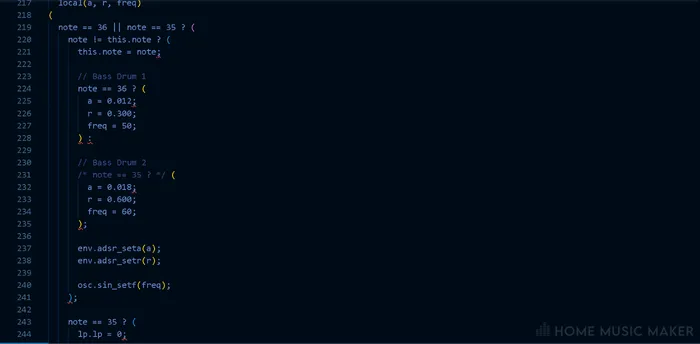
Like many other features of REAPER, it may require extra work to get started. Still, once you get past that first hurdle, it opens up many possibilities.
WINNER: Ableton Live
Ease Of Installation
In regards to installation, REAPER is a far more accessible option. Download and unzip the program, and you’re good to go.
With Live, you’ll need to install it on your computer by going through a series of steps– which can be intimidating for beginners.
As well as installing the software, you will have to register an account with them. Last, Ableton is a significantly larger download and much more expensive than Reaper.
WINNER: REAPER
Audio Recording And Editing Ability
The sheer flexibility of REAPER’s open architecture means it is superior in audio editing. It naturally feels like a better option when working with live instruments.
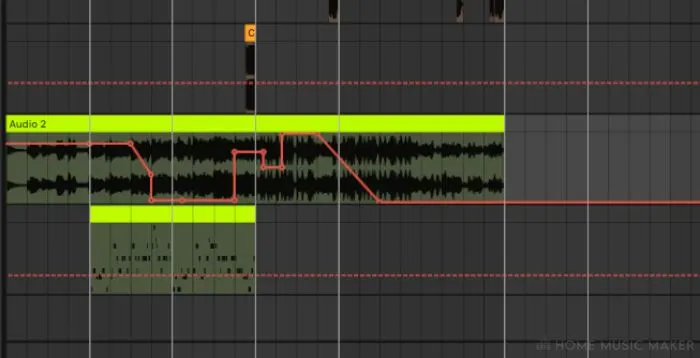
Ableton Live gives you more creative control with its unique loop-based design and instruments that can be played by a MIDI controller or keyboard shortcuts. The way it handles automation on tracks is different from that of REAPER.
It feels like a more natural experience for those who want to create songs with loops and sampled instruments.
The choice between these two software options comes down to personal preference and the type of work you want.
But at the end of the day, you’re still limited to what Ableton provides. This means REAPER is the winner here.
WINNER: REAPER
Visual Customization
One of the great things about REAPER is that it’s one of the most customizable DAWs on the market. You can choose from a range of skins, but you can also change its color scheme and window layout to suit your needs.
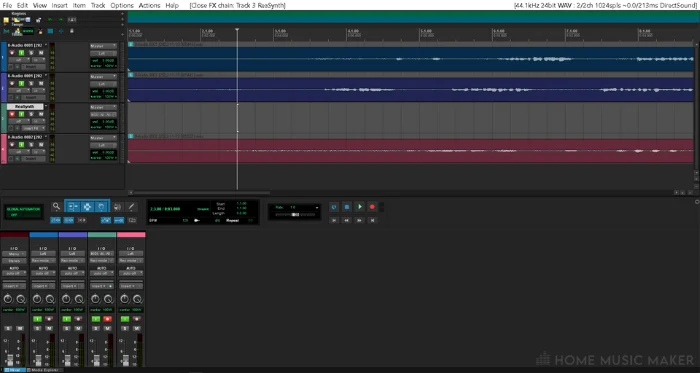
REAPER also features some powerful scripting abilities. Comparable is Ableton’s elusive “MIDI remote scripts”, but they are horribly documented. And while Ableton Live suite does include Max 4 live, Ableton has only exposed specific functionality to the API.
Max for live is fantastic because it lets you load instruments and FX made in Max/MSP directly into your project, but that’s about it.
As far as its integration with Ableton itself, it’s functional but indeed not its most vital feature.
REAPER, however, gives you multiple scripting options for virtually complete control of all aspects of the software.
WINNER: REAPER
Mixing And Mastering
Mastering is a process that uses various tools and techniques to enhance the audio and prepare it for distribution. Mixing is the process of combining multiple tracks to make a finished song.
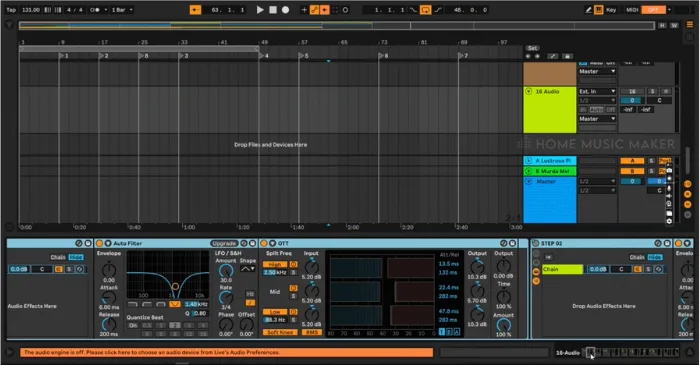
Although both programs can be used to mix and master your audio, I have to pick Ableton as the winner here simply due to the number of tools it comes with out of the box.
Furthermore, Ableton feels like a more natural choice for working with pre-recorded audio.
WINNER: Ableton Live
REAPER vs. Ableton Live For CPU Usage
In terms of CPU usage, REAPER excels in this area. With its fewer features and ease of use, it will work well with lower-end CPUs and provides a more responsive and snappy experience overall.
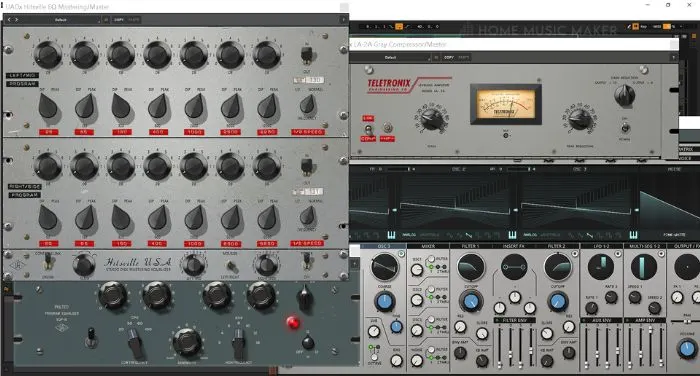
Ableton Live has much more to offer than REAPER, so that may be a good thing if you’re looking for something complex. It also works better with high-end CPUs.
But regardless, REAPER is the clear winner here for being far more lightweight and efficient.
WINNER: REAPER
READ NEXT:
Please read our article on whether you can run Ableton on a Macbook Air for a more in-depth look at the specifications required.
What Is The Price Difference Between REAPER And Ableton?
One of the worst parts about Ableton Live is the price tag. It’s an elegant and complex piece of software with a price that reflects that.
Depending on what edition you get, Ableton ranges from $79 to $750.
Contrary to this, REAPER’s most attractive feature is the meager price.
Starting at only $60, It’s probably the cheapest DAW on the market(save for some free alternatives such as Tracktion Waveform or Cakewalk by Bandlab).
Even the more expensive editions of REAPER will cost you at most $225 max.
So in terms of affordability, REAPER wins, hands down.
WINNER: REAPER
REAPER DAW Pros And Cons
Pro’s
- Fast & efficient
- Cheap
- Powerful scripting
Con’s
- Bare bones
Ableton Live Pros And Cons
Pro’s
- Built for composing and performing
- Max/Msp Integration
- Lots of great FX
Con’s
- Steep learning curve
- Expensive
READ NEXT:
For a more in-depth look, check out our article on the drawbacks of REAPER.
Who Is REAPER Best Suited For?
If you’re looking for a cheap, powerful, and easily customizable digital audio workstation, then REAPER is the right choice. It has a vast array of features that will allow you to customize it to your heart’s content.
This makes it the perfect solution for anyone on a tight budget or who wants to avoid investing in expensive software because they are unsure if they will like it.
Who Is Ableton Live Best Suited For?
Ableton Live is a digital audio workstation best suited for electronic music. It was built with live performance in mind and came with more out of the box. It is an excellent option if you don’t mind doing things the “Ableton way”.
It has a high price tag but is well worth it, offering an impressive array of possibilities for music production.
Related Questions
How Much Ram Do You Need For REAPER?
When it comes to using REAPER, the amount of RAM you need will depend on the size and complexity of your projects. Also, consider how many virtual instruments and plugins you’re using.
A general rule of thumb is to have at least 8 GB of RAM for primary audio production and editing and 16 GB or more for more complex projects with multiple tracks and virtual instruments. However, remember that having more RAM can make Reaper run more smoothly and help prevent performance issues like audio dropouts or crashes.
Can You Use Autotune In REAPER?
Yes, you can.
Start by downloading and installing a suitable autotune plugin. Once you have the plugin installed, you can add it as an effect to the track or tracks you want to apply it to.
Can You Still Use REAPER After 60 Days?
After the 60-day trial period has ended, you will need to purchase a license to continue using the software. If you do not buy a license, the software will become inactive, and you will no longer have access to its features.
Is REAPER Good For Electronic Music?
Reaper is known for its stability and low-latency performance, which is essential for electronic music production. It also has a large user community that can offer support, tips, and tutorial resources in case you need help.
Reaper is a versatile DAW software suitable for electronic music production and can be used by beginners or professional producers to create complex and rich electronic sounds.
Do Any Professional Producers Use REAPER?
Yes, one such artist is Tycho. Also, It is said that Hans Zimmer uses REAPER along with other DAWS.
Is REAPER Good For Beginners?
The low price makes it a great entry point for new producers. The simple and organized layout means you can easily accomplish most tasks.
Final Words
Which DAW is the best one to start with? To answer that question, it depends on your needs. Suppose you’re looking for a more direct approach to making music and need the best sound quality possible. In that case, Ableton Live is the way to go.
If you’re looking for a less restricting workflow and are budget-conscious, REAPER might be a better choice.
READ NEXT:
Ableton Live is regarded as one of the best DAWs for live performance, but it’s not the only option. Check out our article on Ableton Live vs. Mainstage.

 Want to connect with other music producers for help and guidance?
Want to connect with other music producers for help and guidance?